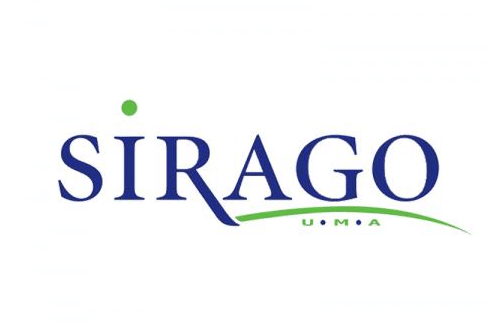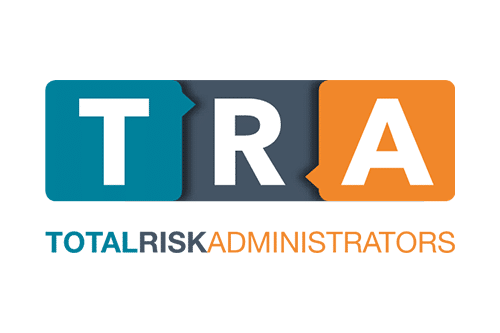
What is Physiotherapy Cover?
What is Physiotherapy Cover in South Africa revealed.
We verified physiotherapy cover in South Africa.
This is a complete guide to physiotherapy in South Africa.
In this in-depth guide you’ll learn:
- What is Physiotherapy Cover?
- Is physiotherapy affordable when you have medical aid?
- Is physiotherapy affordable when you don’t have a medical aid in South Africa?
- What is the difference between physiotherapy and biokinetics?
- Why should you consider physiotherapy?
- What are the benefits of physiotherapy?
So if you’re ready to go “all in” with physiotherapy in South Africa, this guide is for you.
Let’s dive right in…
Overview

👉 Physiotherapy is a treatment that aims to restore, preserve, and maximise a patient’s mobility, function, and well-being. Physical rehabilitation, injury prevention, and health and fitness are all benefits of physiotherapy. Physiotherapists involve you in your own recovery.
👉 In this article, we take a closer look at physiotherapy and learn more about physiotherapy cover.
Understanding physiotherapy

👉 Physiotherapists are experts in the science of movement. They learn how to identify the underlying causes of an injury.
👉 Consider physiotherapy if you have an injury or chronic pain that interferes with your daily functioning. After surgery, such as a hip replacement, or an event, such as a heart attack or stroke, your doctor may recommend to physiotherapy.
👉 If you intend to use medical aid to cover the cost of physiotherapy, check the details of your medical aid plan to ensure the physiotherapist is covered. You will be unable to use your benefits if the physiotherapist is not covered by that medical aid scheme, and you will be required to pay the full cost of therapy.
A closer look at Physiotherapy

👉 Physiotherapists look at the total body rather than just the particular parts of an injury or sickness.
👉 Physiotherapists commonly employ the following approaches:
➡️ physiotherapists can provide basic advise about topics that can affect your daily life, such as posture and proper lifting or carrying techniques to assist prevent accidents mobility, targeted training, and physical activity.
➡️ exercises may be prescribed to enhance your overall health and mobility, as well as to strengthen specific parts of your body manual therapy
➡️ the physiotherapist uses their hands to ease pain and stiffness, and to encourage improved body movement
➡️ Other treatments, such as water exercises (hydrotherapy or aquatic therapy) or acupuncture, may be utilised on occasion.
The purpose of physiotherapy 
👉 Physiotherapists are concerned with both prevention and rehabilitation. Treatment can address issues caused by an accident, disease, or handicap. Here are a couple of such examples:
➡️ Neck and back discomfort caused by muscle and bone abnormalities
➡️ Arthritis and the aftereffects of amputation are examples of bone, joint, muscle, and ligament problems.
➡️ Asthma and other lung diseases
➡️ Disability caused by heart problems
➡️ Pelvic difficulties, such as bladder and bowel disorders caused by delivery
➡️ Mobility loss caused by brain or spine injuries or disorders such as Parkinson’s disease and multiple sclerosis
➡️ Fatigue, pain, oedema, stiffness, and muscle weakness, such as during cancer therapy or palliative care
Understanding physiotherapy in terms of medical aid cover

👉 Your medical aid scheme will likely cover physiotherapy in the event that your reported or diagnosed condition requires physiotherapeutic treatment.
👉 Physiotherapists may collaborate with other medical experts or provide treatment on their own.
👉 In most circumstances, your doctor will refer you to a physiotherapist if it complements existing treatments. During the recovery process, your doctor may recommend physical therapy for preventive, rehabilitative, or pain management measures.
👉 In other circumstances, patients may be aware of their own limitations, such as neck and shoulder stiffness, and seek treatment on their own. Physical therapy can help people of all ages improve their health for a variety of conditions.
👉 Physiotherapy may be recommended to cover the following conditions (for which you should check if you are covered by your medical aid – and if the scheme covers physiotherapy at all)
Lymphedema
👉 Excess fluids collect in the lymphatic system and subsequently circulate in the bloodstream, producing swelling. Complete decongestive therapy (CDT) is used by physiotherapists to relieve swelling and prevent future fluid build-up.
Sport injury
👉 Stress fractures, for example, can be treated with proper rehabilitation programmes or preventative exercises for a safe and speedy recovery.
Muscular dystrophy
👉 Muscles and bones deteriorate and weaken as we age or suffer from numerous diseases. Mobility exercises and the use of supporting frameworks can help with this.
Back and neck pain
👉 Acute back and neck pain that appears quickly or chronic back and neck pain that lasts months or years limit normal functioning. Physical therapy helps to reduce pain and increase mobility.
Limited range of motion
👉 Too much stress from overuse of some regions of your body creates swelling or discomfort in those locations. Motion rage is hampered, but it can be restored with therapy. Similarly, physical therapy will improve extension or flexion.
Osteoporosis
👉 Thin and brittle sponge-like bones with numerous holes inside them break. Similarly, debilitating fractures might be avoided with prompt treatment.
Vertigo
👉 Many patients experience dizziness or light-headedness, which can lead to deadly falls. Vertigo can be treated because physical therapy improves balance.
Headaches
👉 Migraine and tension headaches might result in serious head or neck injuries. A good treatment plan can be put in place to improve neck mobility and strengthen the upper back muscles.
Carpal Tunnel Syndrome
👉 Repetitive stress injuries are caused by spending all day at a computer. Wrist injuries and soreness, on the other hand, can be alleviated by adjusting your posture and completing stretches and exercises.
Huntington’s Disease
👉 Huntington’s disease affects both intentional and involuntary motions. Common symptoms include spasms, slurred speech, and unsteady gait, which can be treated with physical therapy.
Cancer
👉 Cancer treatment can cause extreme pain and impairment, lowering patients’ quality of life. When physiotherapists diagnose and address deficiencies, it is feasible to manage the consequences of the kind of cancer.
👉 Physical therapy can be beneficial in the treatment of a variety of medical illnesses, ranging from sports injuries to Parkinson’s disease, vertigo to cancer. Contact XO Physical Therapy, your dependable physiotherapists, and begin living life to the fullest.
An example of physiotherapy cover: is Discovery Health

👉 Discovery Health offers Cover for Allied, Therapeutic and Psychology. This includes acousticians, biokinetics, chiropractors, counsellors, dieticians, homoeopaths, nurses, occupational therapists, physiotherapists, podiatrists, psychologists, psychometrists, social workers, speech and language therapists, and audiologists.
👉 Out-of-hospital allied, therapeutic and psychological healthcare services are covered at the Discovery Health Rate up to an overall annual limit, which varies according to family size and plan type.
👉 Please refer to Benefits available on the different plan types section to see what limit is applicable to your health plan.
👉 These are not separate benefits. Depending on your plan, limits apply to claims paid from your Medical Savings Account (MSA) and the Above Threshold Benefit.
👉 Discovery Health pays for out-of-hospital allied, therapeutic and psychological healthcare services from the available funds allocated to your Medical Savings Account (MSA) and from the Above Threshold Benefit (ABT) once your claims add up to the Annual Threshold. Discovery Health pays these claims up to a maximum of 100% of the Discovery Health Rate.
Frequently Asked Questions
Do medical aids in South Africa provide coverage for physiotherapy?
In South Africa, many medical aids include coverage for physiotherapy. Different medical aid programs and plans, however, may differ in terms of the precise coverage and limits.
Do I need a referral from a doctor to access physiotherapy benefits?
Physiotherapy benefits may or may not require a doctor’s referral, depending on the rules of your particular medical aid plan. While some programs would demand a referral, others might permit direct access to physiotherapy services. It’s crucial to review the regulations of your medical assistance program.
How many physiotherapy sessions can I claim in a year?
The coverage and limits as set by your medical aid program will determine how many physiotherapy sessions can be claimed in a calendar year. Some medical aids can have a cap on the total cost of physiotherapy services, while others might have a set number of sessions per year.
Are there any limitations or exclusions for physiotherapy coverage?
Yes, different medical aid schemes may have different restrictions or exclusions on the reimbursement of physiotherapy. These restrictions may pertain to the ailments or treatments that are covered, the need for pre-authorization, and the use of particular networks or preferred providers.
Can I choose my own physiotherapist or am I restricted to specific providers?
Depending on the rules of your medical aid, you may be free to select your own physiotherapist or you may be limited to a few. While some medical aids could have a recommended networks or a list of approved therapists, others might give you more freedom to pick the physiotherapist you want.
How much is a physiotherapy consultation in South Africa without medical cover?
Physiotherapy consultations in South Africa average at R900.


































